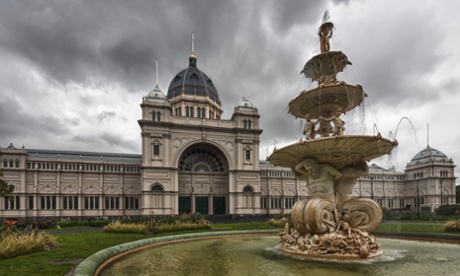It’s a rivalry as old as British settlement. Two cities, forever competing for the loyalty of their citizens and the admiration of visitors.
One has a harbour. The other has laneways. One has world-class beaches, and the other, a world-class live music scene. One is breathtakingly stunning, and the other is … bigger.
For more than a century Sydney has been Australia’s largest city, until this week, when Melbourne snatched the mantle - thanks to a technicality.
The Australian Bureau of Statistics [ABS], which is put in charge of measuring the size of the countries’ towns and cities, announced a boundary change in the last census that has seen Melbourne’s population leapfrog Sydney by 18,700 to 4,875,40.
The ABS changed the boundary of Melbourne’s Significant Urban Area, a little-known geographical classification, to include the district of Melton, which hangs off the city’s north-western fringe.
For years Melbourne’s population has been expected to overtake its northern rival. Commentators pitched it as the final deciding factor in which city reigns supreme. But for such a lightning rod moment, there wasn’t a lot of elation in the streets.
In a laneway in the court district of Melbourne’s CBD sits Patricia, a popular cafe, where the staff wear leather aprons and drip-pour coffee is served in whisky glasses.
Manager Elly Bruin is quintessentially Melbourne. She’s carved a career in coffee, sports a mullet, wears a pair of black Crocs and lives in the trendy inner north.
“I had no idea this had even happened, no one has been talking about it,” Bruin said.
“As I’ve gotten older, I’ve very much been like who gives a fuck - Sydney is Sydney, Melbourne is Melbourne. They’re two very different cities.”
For most of the last century, this indifference was not the norm.
The two cities fought so hard for supremacy that in a deal to keep the peace, neither was allowed to become the capital and Canberra was built in a sheep paddock between the two instead. Under the terms of the agreement, the capital would sit a little closer to Sydney, but Melbourne would host parliament until it was built.
Even as colonies, the two struck very different chords. In the 1850s, Sydney encouraged free trade, only putting tariffs on tobacco, alcohol, sugar, tea and coffee. Victoria was struggling to keep its population from leaving after a gold rush so protected its manufacturing industry by slapping import duties on goods from clothes to glassware.
From this the characters of the cities were formed - Sydney for finance and media, Melbourne for manufacturing and culture, and Canberra for the politics.
Designer Josh Coughlan grew up on Sydney’s northern beaches, moved to Melbourne, and then back to Sydney to avoid two years of lockdown. He is now back in Melbourne working.
“Melbourne is hands down the better city to live in,” Coughlan says.
“I think of it like Melbourne and Sydney are two sisters. Sydney is the prettier sister who’s always been praised her whole life. She won a beauty pageant in 2000 with the Olympics, but she’s got no personality.
“Whereas Melbourne is full of personality, she’s quirky. She’s the sister you want to have a drink with.”
There’s a popular belief among Sydneysiders that only people in Melbourne care about the rivalry. They’ve got better beaches, better weather, the harbour bridge and the opera house – what do they have to worry about?
“It’s complete projection,” Coughlan says. “It’s the opposite. Obviously, people will defend it when the conversation comes up, but we don’t bring the conversation up.”
Sitting on the other side of the city from Patricia is the city’s town hall, where mayor Sally Capp is taking no prisoners.
“Who needs an Opera House when your whole city is a stage?” Capp says.
“Melbourne’s beauty lies in its discovery; it isn’t flashy and surface level like Sydney. You can peer down a laneway and find a tiny bar that becomes your own little secret, or take refuge from the bustle among our many parks and gardens.”
Asked if there’s anything Melbournians get jealous of, she responds with a sharp “no”.
“Over and over, we’re ranked the best – we’re Australia’s most liveable city, the world’s friendliest city, we’re the events capital, the sporting capital, the arts and culture capital. Let’s just call it now, we’re the capital of capital cities.
“And our coffee is better.”
In Sydney, lord mayor Clover Moore, refused to weigh in, and then weighed in.
“The Lord Mayor doesn’t buy into Sydney v Melbourne debates,” a spokesperson said.
“She thinks Melbourne is wonderful but her focus is on leading Australia’s only global city and best place to live, work and visit, rather than concerning herself with comparisons.”
Liz Allen, a demographer at the Australian National University, says part of the pull of Melbourne isn’t just that it’s more affordable – there’s also “something immeasurable”.
In 2000 the then NSW premier, Bob Carr, declared Sydney was “full” as he argued to restrain its population. That sent a message internationally, Allen says.
“Melbourne, on the other hand, was going, ‘What a great place to live, come to Melbourne’. And so they did.
“We have this kind of pull factor to the world that Melbourne is the place to be.”
At the heart of this story, though, is urban planning. Allen says Australians have a “fear” of medium to high-density living – so its cities sprawl in all directions.
“When it comes to planning and development of housing we’ve accepted we’re just going to continue as we always have, and that is we’re going to grow out rather than grow up,” Allen says.
That gives the long-term population advantage to Melbourne, with its relatively flat and uninterrupted surrounds, whereas Sydney’s expansion is constrained by rivers to the north and south, mountains to the west and sea to the east.
But Allen says the numbers are beside the point – if they continue to sprawl, both Sydney and Melbourne are locking their residents into increasingly unsustainable lifestyles.
“While our two major global cities fight out this invisible war, our cities are changing in a way where we’re not strategically thinking about the future.”











